The 6 Kingdom Classification of Prokaryotes and Eukaryotes
The biological world is so diverse and it has shown a great deal of biodiversity during its millions of years of history with millions of organisms in the list of studies.
So, with such a huge bio-diversity, it has become very much important to actually divide and classify various organisms for the ease of study and recognition.
Due to this reason, the biological classification system is widely used. And, in the present day, the classification system that is widely used is the Phylogenetic Classification System.
What is Phylogenetic Classification System?
Phylogenetic Classification System is the system of biological classification in which all the living and extinct organisms in the world are classified based on evolutionary relationships among the organisms.
Based on the Phylogenetic 6 Kingdom Classification System:
- Kingdom Archaebacteria: These are prokaryotes.
- Kingdom Eubacteria: These are prokaryotes.
- Kingdom Protista: These are eukaryotes.
- Kingdom Fungi: These are eukaryotes.
- Kingdom Animalia: These are eukaryotes.
- Kingdom Plantae: These are eukaryotes.
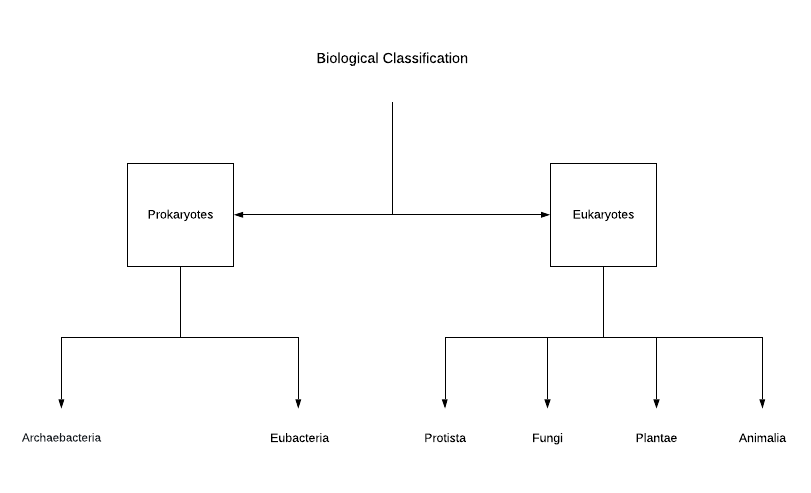
The 6 Kingdom Classification of Prokaryotes and Eukaryotes
There are 2 Kingdoms of Prokaryotes
1. Kingdom Archaebacteria: These are not true bacteria and are found only in harsh habitats like salty areas, hot springs, marshy areas, etc.
2. Kingdom Eubacteria: These are true bacteria and are found in abundance in nature. They are unicellular and prokaryotic microscopic cells.
There are 4 Kingdoms of Eukaryotes
3. Kingdom Protista: These are all single-celled eukaryotes with well-defined cell organelles.
4. Kingdom Fungi: Fungi are non-vascular eukaryotic organisms that they have true nucleus enclosed in specific nuclear membranes.
5. Kingdom Plantae: Includes all eukaryotic chlorophyll pigment-containing organisms that have a cell wall in common.
6. Kingdom Animalia: Includes all heterotrophic eukaryotic organisms that are multicellular and lack cell walls.
The 2 Kingdoms of Prokaryotes
1. Kingdom Archaebacteria
| Cell Structure | Prokaryotes |
| When Evolved | 3 to 4 billion years ago |
| Body Organization | Unicellular |
| Nuclear Membrane | Absent |
| Mode of Nutrition | Autotrophic (Chemosynthetic & Photosynthetic) Heterotrophic (Saprophytic & Parasitic) |
| Reproduction | Binary Fission |
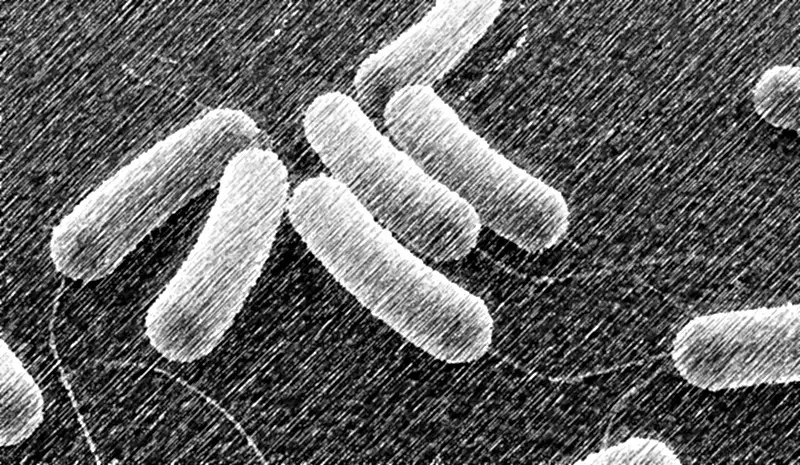
Archaebacteria are special since they live in some of the harshest habitats and are named accordingly as Halophiles living in extremely salty areas), Thermoacidophiles (living in hot springs), and Methanogens (living in marshy areas).
Archaebacteria differ from other varieties of bacteria as they have a different type of cell wall structure. The structure of their cell wall is very much prominent in their survival in extremely harsh conditions.
Archaebacteria are considered extremophiles because they live in a variety of harsh environments and can tolerate extreme conditions such as acidity and salinity.
They appear to be living fossils acting as a connecting link in evolution between bacteria and multicellular eukaryotes.
Examples: Acidilobus saccharovorans, Staphylothermus hellenicus, Haloarcula hispanica, Methanococcus jannaschii, etc.
2. Kingdom Eubacteria
| Cell Structure | Prokaryotes |
| When Evolved | 3 to 4 billion years ago |
| Body Organization | Unicellular |
| Nuclear Membrane | Absent |
| Mode of Nutrition | Autotrophic (Chemosynthetic & Photosynthetic) Heterotrophic (Saprophytic & Parasitic) |
| Reproduction | Binary Fission & Conjugation |
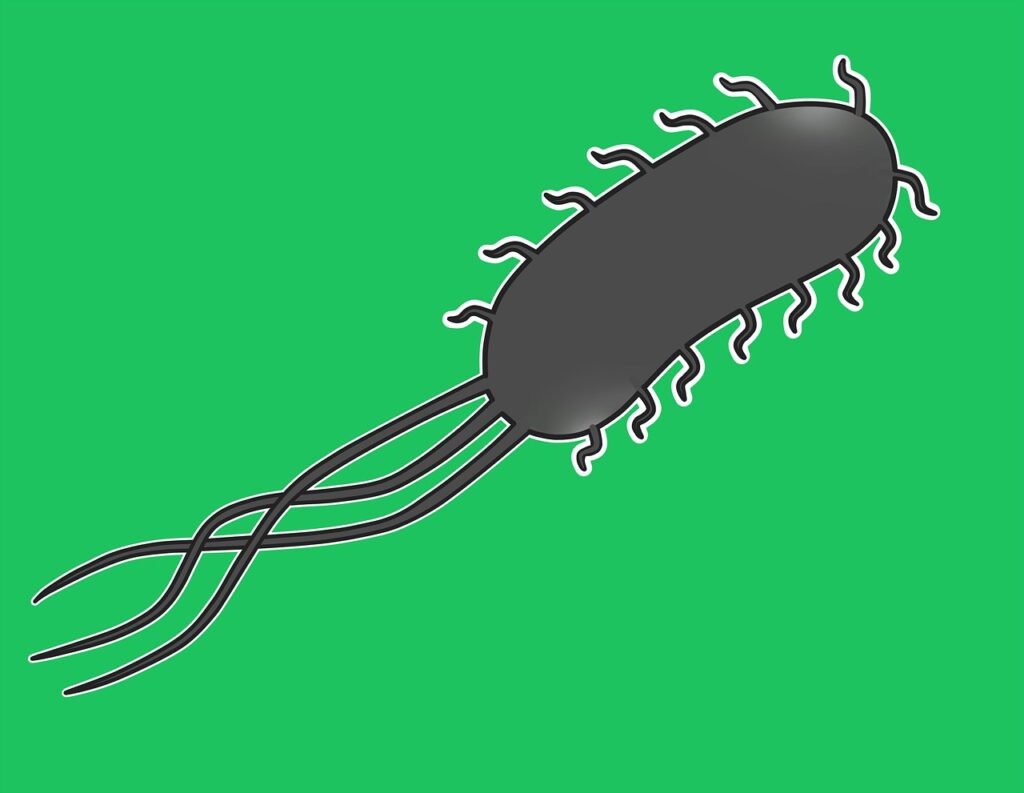
Eubacteria are those types of true bacterias that are both autotrophs and heterotrophs. This means that these can produce their own food and can even be dependent on the producers for the food.
They can obtain nutrients from other living organisms as well. Some are pathogens while some are parasites.
They are also chemosynthetic in nature, which means that they get energy by breaking down and releasing the energy of inorganic compounds containing sulfur and nitrogen.
These are found on almost all surfaces and consist of nearly 5000-6000 species that have been discovered to date.
These are the most abundant bacteria in nature. They are characterized by the presence of a rigid cell wall, and if motile, a flagellum.
Examples: Ureaplasma, Mycoplasma, Escherichia coli, Streptococcus pneumoniae, etc.
The 4 Kingdoms of Eukaryotes
3. Kingdom Protista
| Cell Structure | Eukaryotes |
| When Evolved | 1.5 billion years ago |
| Body Organization | Unicellular |
| Nuclear Membrane | Present |
| Mode of Nutrition | Autotrophic (Chemosynthetic & Photosynthetic) Heterotrophic (Saprophytic & Parasitic) |
| Reproduction | Asexually & Sexually |
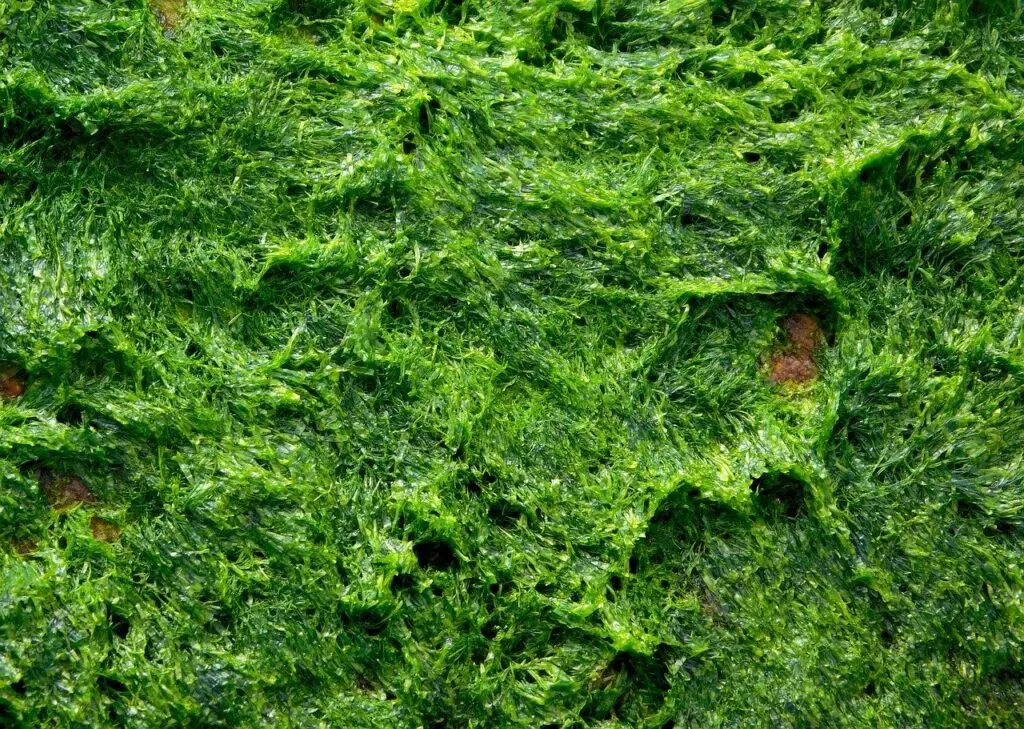
All unicellular eukaryotes are placed under Protista. There are a diverse collection of organisms in this kingdom but, the boundaries of this kingdom are not well-defined.
Protists are simple eukaryotic organisms that are neither animals, plants nor fungi.
These are unicellular in nature and often seen living as colony of cells.
Most protists live in water, damp terrestrial environments, or even as parasites.
The protistan cell body has a well-defined nucleus and other membrane-bound organelles. Some have flagella and cilia.
They can reproduce both asexually and sexually by a process involving cell fusion and zygote formation.
Examples: Algae, Amoebas, Euglena, Plasmodium, Paramecium, Slime molds, etc.
4. Kingdom Fungi
| Cell Structure | Eukaryotes |
| When Evolved | 1 billion years ago |
| Body Organization | Multicellular with loose tissue |
| Nuclear Membrane | Present |
| Mode of Nutrition | Heterotrophic (Saprophytic & Parasitic) |
| Reproduction | Vegatative, Asexual, and Sexual |
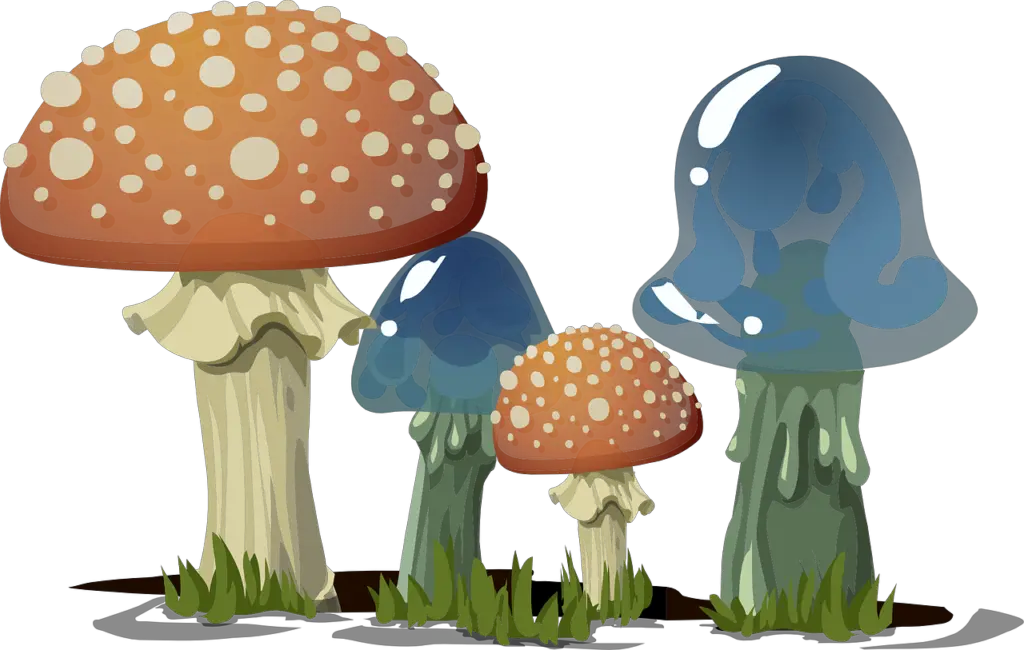
Multicellular microorganisms such as yeasts, moulds, and mushrooms are classified under the Kingdom fungi.
Most fungi are heterotrophic and absorb soluble organic matter from dead substrates and hence are called saprophytes.
Those that depends on living plants and animals are called saprophytes.
Those fungi which live in close association with algae are called lichens and with roots of higher plants as mycorrhiza. These fungi are symbionts.
The bodies of the fungi are multicellular containing long, slender, thread like-structures called hyphae. Mycelium is the network of hyphae.
Examples: Sac Fungi, Yeasts, Mushroom, Mold, etc.
5. Kingdom Plantae
| Cell Structure | Eukaryotes |
| When Evolved | 500 million years ago |
| Body Organization | Multicellular with Tissue/Organ System |
| Nuclear Membrane | Present |
| Mode of Nutrition | Autotrophic (Photosynthetic) |
| Reproduction | Asexually & Sexually |

Kingdom Plantae includes all the chlorophyll-containing organisms, commonly called plants. Kingdom Plantae is composed of all plants.
Only a few members are partially heterotrophic. Those that includes are some of the insectivorous plants or parasites.
The cells of these organisms have green coloured chloroplasts and cell wall that is mainly made up of cellulose.
Kingdom Plantate includes Algae, Bryophytes, Pteridophytes, Gymnosperms, and Angiosperms.
Examples: Flowering plants, Cactus, Seed Plants, Moss, Algae, Vascular Plants, Embryophytes, etc.
6. Kingdom Animalia
| Cell Structure | Eukaryotes |
| When Evolved | 700 million years ago |
| Body Organization | Multicellular with Tissue/Organ System |
| Nuclear Membrane | Present |
| Mode of Nutrition | Heterotrophic (Holozoic, Saprophytic, etc.) |
| Reproduction | Mostly Sexually |

Kingdom Animalia includes all the heterotrophic eukaryotic organisms that are mostly multi-cellular and lack the cell wall.
Kingdom Animalia is composed of all animals. These are directly and indirectly dependent on the producers i.e. the plants for their food.
Their mode of nutrition is holozoic that is by the ingestion of food.
One important characteristic of these organisms is that they follow a definite growth pattern and grow into adults that have a definite shape and size.
Higher animals show elaborate sensory and neuromotor mechanisms. Most of them are capable of locomotion.
The sexual reproduction is done by the sexual intercourse between male and female organisms followed by the zygote and then the embryological development.
Examples: Humans, Cats, Dogs, Earthworms, Cockroaches, etc.
